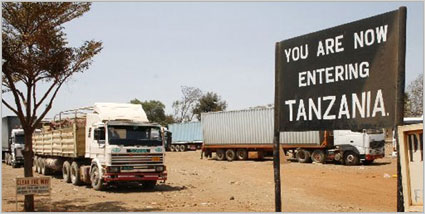 Tanzania
Tanzania looked set to start the year as the second largest destination for
Kenyan goods after
Uganda even as Chinese and Indian products flooded its market.
Official data shows that Tanzania’s consumption of Kenya’s exports went up by 3.4 per cent at the end of third quarter of last year, catching up with the United Kingdom which has been second.
The data prepared by the Kenya National Bureau of Statistics shows that Tanzania and the UK each accounted for Sh30 billion that Kenya exported to various destinations of the world by the end of September, narrowing Uganda’s lead of Sh44 billion.
But India and China —the two sources of products that have dominated Kenya’s market in the last five years — have maintained their lead with 2012 imports rising to Sh125 billion and Sh127 billion respectively by third quarter.
“Generally, the direction of trade will always be determined by ability of any trading partner’s producers to meet domestic needs,” says Mr Vimal Shah, Managing Director of Bidco Oil Refinery.
Local producers and consumers looking for bargains have increasingly turned to Asia for high-value goods such as electronics, machinery, vehicle and medicines which drive import volumes compared to semi processed commodities such as leather that Kenya exports.
Last year, the two countries accounted for Sh294bn or 22 per cent of the Sh1.3 trillion worth of goods that Kenya shipped in from different countries of the world. In comparison, the four EAC partners only managed to ship in a total of Sh26.9 billion over the period.
This trend is expected to continue through 2013, players have said, citing trade in primary goods, similar manufacturing goods and use of same technology that have hit trade among African countries.
It is only South Africa-— which due to its strong and efficient manufacturing base produces a wide range of products — that has penetrated and defended its market in Kenya over the years.
“It is not possible for landlocked neighbours or even Tanzania to import raw materials, produce products already available in Kenya and transport them back here for sale,” said Mr Shah.
In spite of various economic pacts with African countries like the 19-member Comesa and the five-member EAC common market, only South Africa, which belongs to none of these blocs, is in the list of Kenya’s top 10 sources of imports.
The East African Legislative Assembly (EALA) is however convinced that full implementation of the Common Market Protocol will level the playground.
In a report released two weeks ago by EALA’s Committee on Regional Affairs and Conflict Resolution, the regional MPs want partner states to match their plans with action “to protect optimism and strong support that citizens have for the economic integration.”
The team headed by Kenya’s representative Abubakar Zein Abubakar, released the report after last month’s trip that covered Dar es Salaam via Rusumo to Kigali, Mombasa via Malaba and Katuna to Kigali.
Source :.businessdailyafrica.com